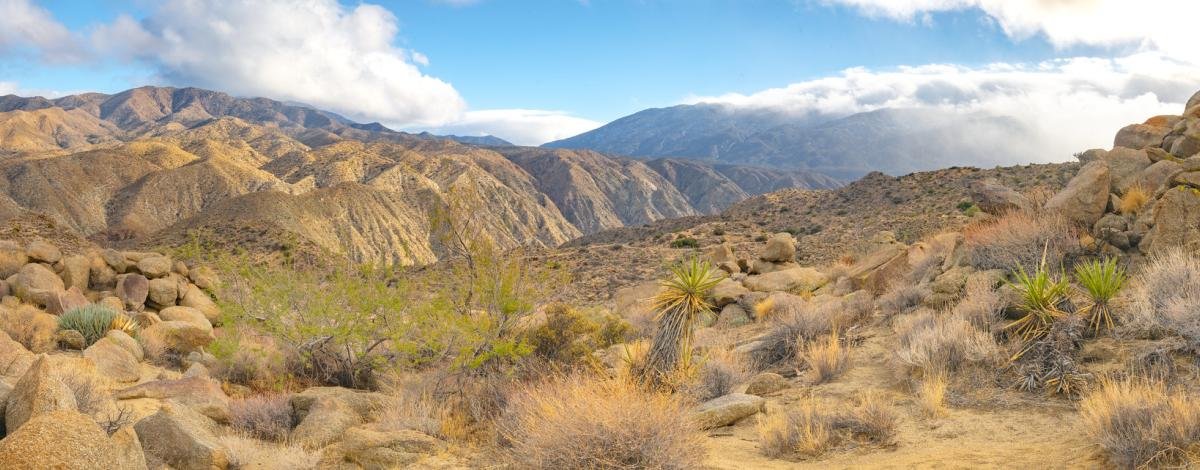
Vegetation distribution shifts
The distribution of vegetation across the north slope of the Deep Canyon in Southern California’s Santa Rosa Mountains has moved upward 213 feet over a 30-year period. Vegetative changes at Deep Canyon may be indicative of current or future changes throughout California in a warming, drying climate.
Changes in climate are driving many plants and animals towards areas where conditions are favorable. Across the globe, observed changes in species distribution – usually towards the poles or to higher elevations – have been noted. A warming climate or drought can increase stress on plants at lower elevations, pushing them upward where conditions are more suitable. Increases in the abundance of plants, which is measured by plant cover, in more favorable (usually higher) elevations have been observed, such as in the Santa Rosa Mountains. This can occur with or without a change in the lower or upper elevational range limit in which they grow. For more information, download the Vegetation Distribution Shifts chapter.
The Deep Canyon transect, which climbs southward from sea level to a height of over 8700 feet, is located in the Santa Rosa Mountains of southern California. This transect spans across desert scrub, pinyon-juniper woodland, chaparral, shrubland and conifer forest.
Credit: Bureau of Land Management
What does the indicator show?
- In the Santa Rosa Mountains, the most dominant plant species in the Deep Canyon have increased their abundance (measured as plant cover) at higher elevations in 2006-2007 compared to 1977. Dominant species are those with the greatest abundance and the widest distribution in their community.
- Nine of ten species studied collectively shifted by an average of 213 feet higher in elevation.
A 2006-2007 resurvey compared changes in the area covered by ten dominant plant species in the Deep Canyon relative to 1977. Plant cover for only one species, the desert agave (left) shifted downslope (by 164 feet). The other dominant species moved upslope by 92 to 466 feet; among these are (second left to right): Muller’s scrub oak shifted 121 feet, White fir shifted 315 feet, and Creosote bush shifted 466 feet.
Credit (from left to right): Pixabay, Joshua Tree National Park/Flickr, Siddarth Machado/Flickr, and NASA
Why is this indicator important?
- Changes in the distribution of dominant plant species can disrupt ecological relationships, affecting the availability of food and habitat for other species. Such disruptions could have more profound impacts when distribution changes occur over a relatively short period, as had occurred in the Deep Canyon.
- The diverse climate and vegetation of Deep Canyon’s slopes range from hot desert at the mountain base, stretching upward through warm chaparral, and finally into mild conifer forests at the mountain peak. This mimics California’s climate and vegetative diversity.
What factors influence this indicator?
- The vegetation upslope shift corresponded with the upward movement of cooler and wetter conditions by about 200 feet over the same period. On a mountain slope, the climate is generally warmer and drier at the lower-elevation limits of a plant species’ range, and cooler and wetter at the upper limits.
- The upslope shifts resulted in part from vegetation mortality during the 1987–1990 and 1999– 2002 droughts. Vegetation showed signs of environmental stress in their lower ranges. The connection between mortality and drought is consistent with a fingerprint of climate change.

